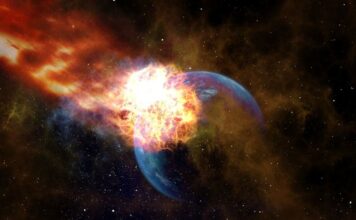STEVE stands for Strong Thermal Emission Velocity Enhancement. This strange atmospheric phenomenon was discovered thanks to the work of aurora enthusiasts and scientists specializing in the study of the atmosphere.
This strange purple and green ribbon was indeed observed for the first time in 2016 by the Facebook group Alberta Aurora Chasers. Since then, so many observer reports have been published, which report neither an aurora borealis nor a photonic aurora. But then, what is it exactly?
Some first thought of a proton aurora, which, although not generally thought to be visible, has been suggested to explain some of STEVE’s strange features. Physicist Eric Donovan of the University of Calgary in Canada, however, was not convinced, preferring to pay particular attention to ESA’s Swarm mission.
The latter aims to study the Earth’s magnetic field to study these phenomena in more detail. As the satellite flew straight at STEVE, data from the instrument targeting the electric field then recorded a temperature rise of 3,000° Celsius! The readings also revealed that the ribbon was 25 kilometers wide and accelerating westward at a speed of 6 kilometers per second.
While the Northern Lights are caused by the interaction between rains of charged particles from the solar winds and gases from the upper atmosphere, scientists from the team of physicist Bea Gallardo-Lacourt, from the University of Calgary in Canada , found that no such thing happened when “Steve” appeared. This luminous phenomenon remains unexplained for the time being.





